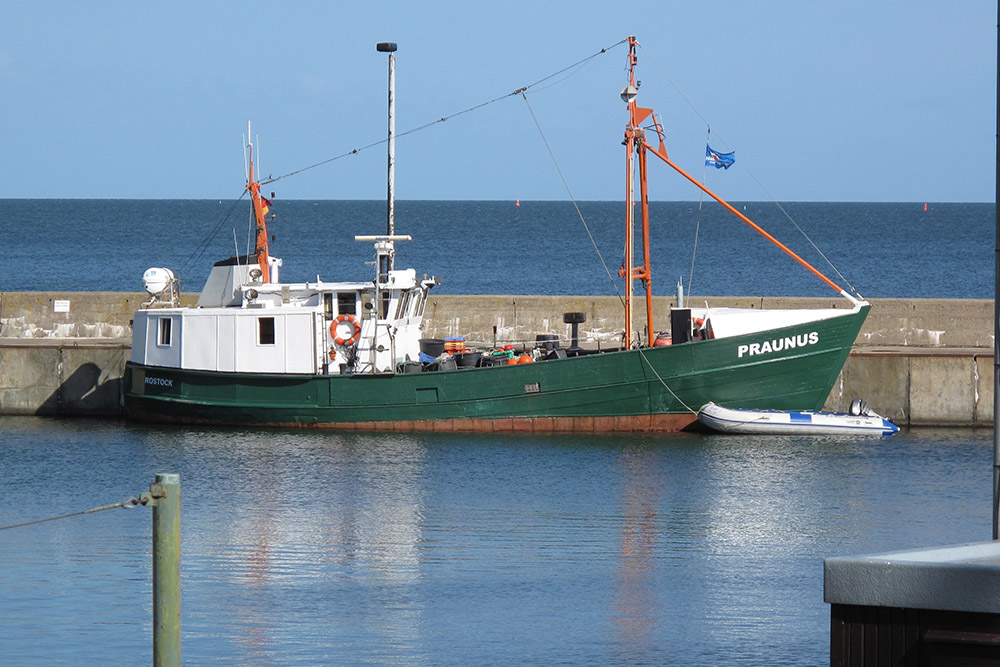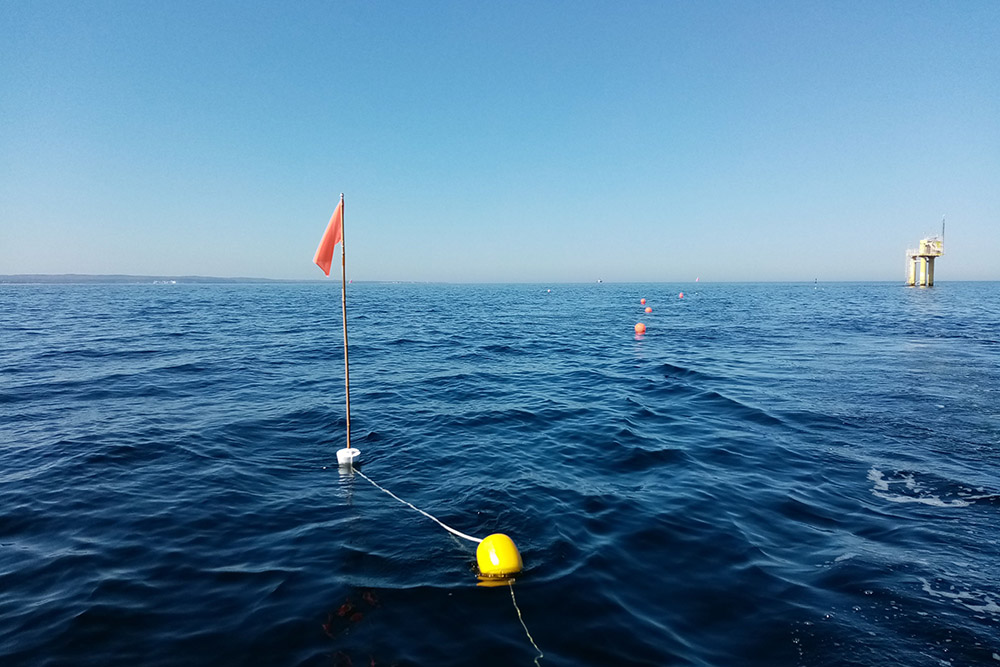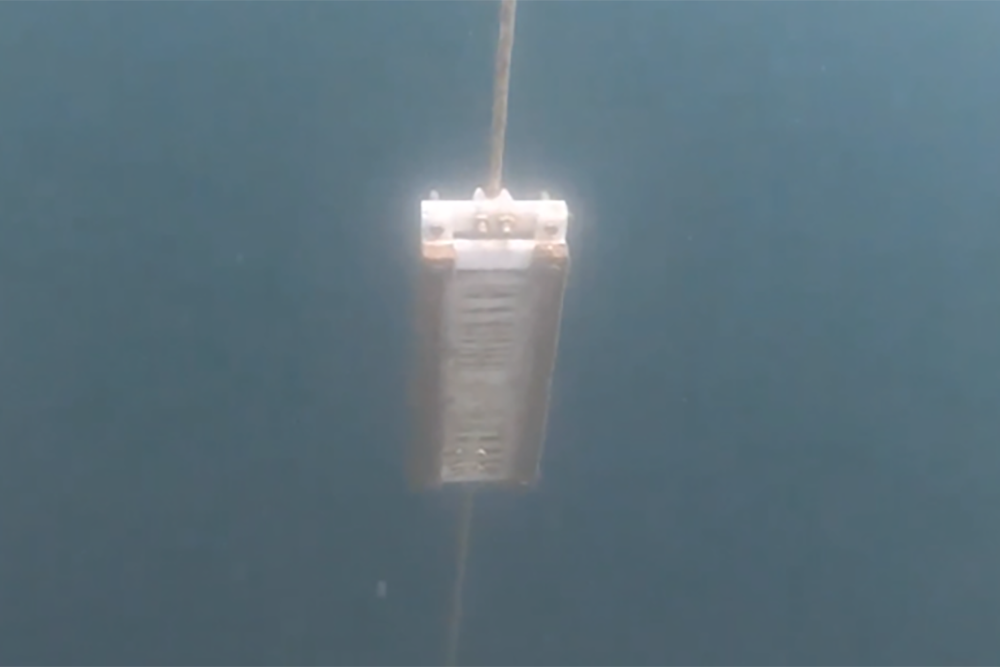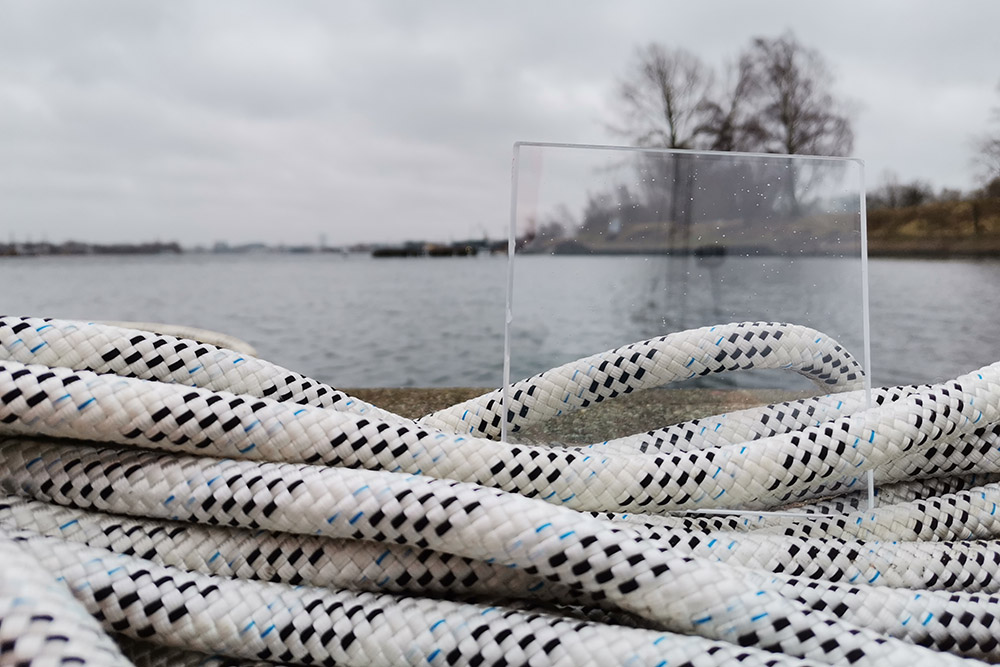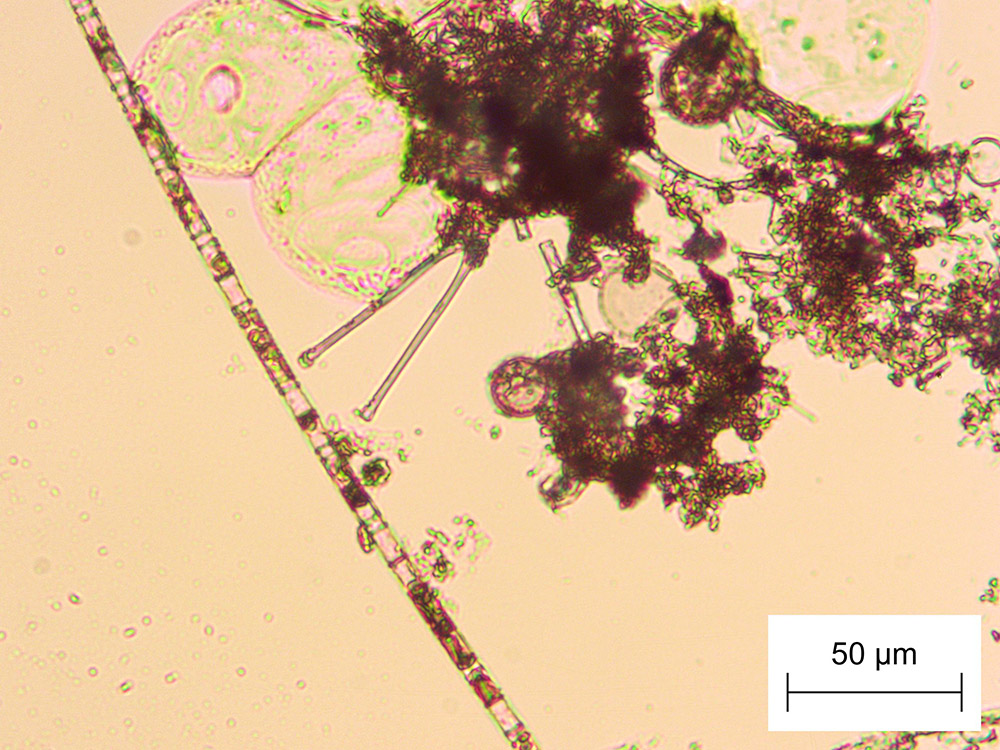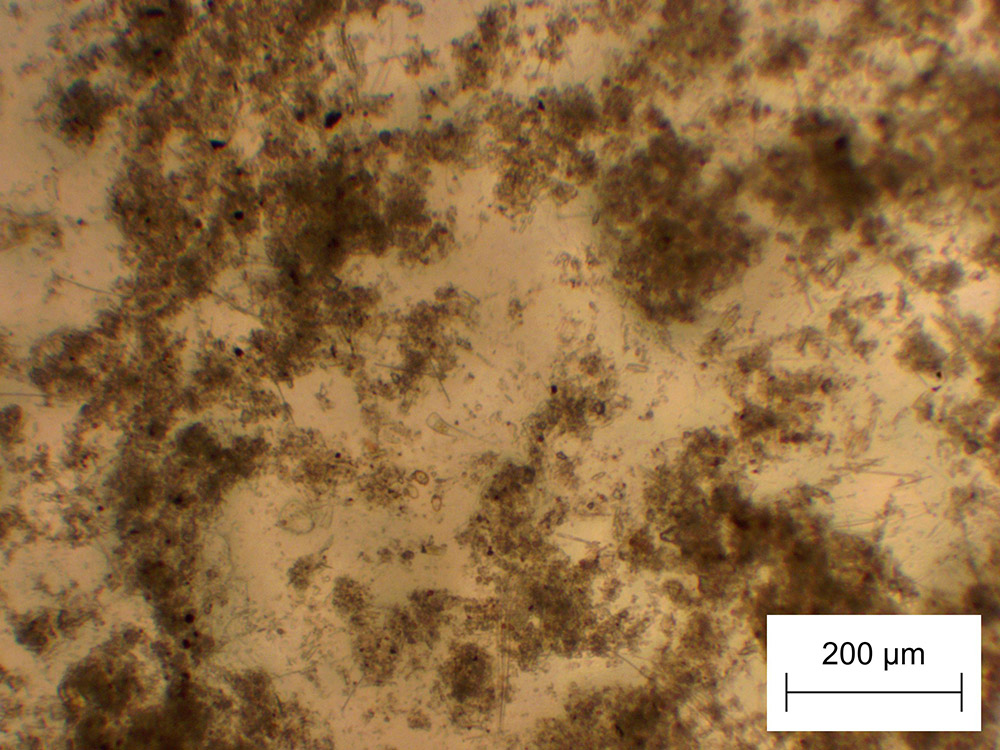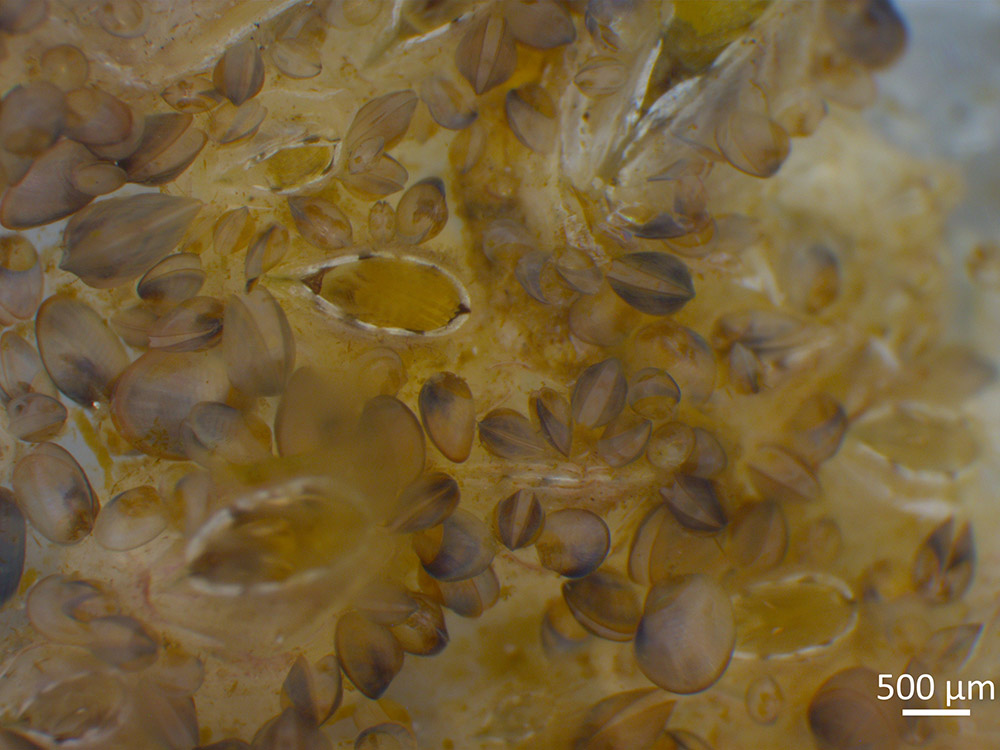Translation: Stephanie Anderseck
New ceramic coating protects offshore wind turbines and ships against fouling
To reduce the burden of environmentally harmful heavy metals and biocides on the oceans, IKTS researchers in Rostock and Dresden are currently developing new types of ceramic coatings for ships and offshore platforms. These particularly durable and sustainable protective layers are designed to keep organisms from covering the maritime structures as gently as possible. Because things are often stormy in this research.
When female materials scientists go into action, the layman may think of white coats and spick-and-span laboratories. This is not the case for Johanna Sonnenberg and Jana Brinkmann: On behalf of the Fraunhofer Institute for Ceramic Technologies and Systems IKTS, they are active in the "Smart Ocean Technology Campus" (SOT) in Rostock. There, they are more likely to slip into rubber boots and a seaworthy semi-survival suit than into a white coat when they go about their work. Because on the research ship and in the rubber dinghy it is often quite stormy out on the Baltic Sea. "There is occasionally a rough breeze," the PhD students say with a twinkle in their eyes. They have signed up for field work to advance sustainable and environmentally friendly solutions for the economic use of the oceans: Together with group leader Dr. Annegret Potthoff at the IKTS main site in Dresden, they are researching innovative ceramic coatings and components. In the future, these are to prevent fouling of offshore platforms and ships, for example, because the fouling causes, among other things, high fuel consumption and maintenance costs.
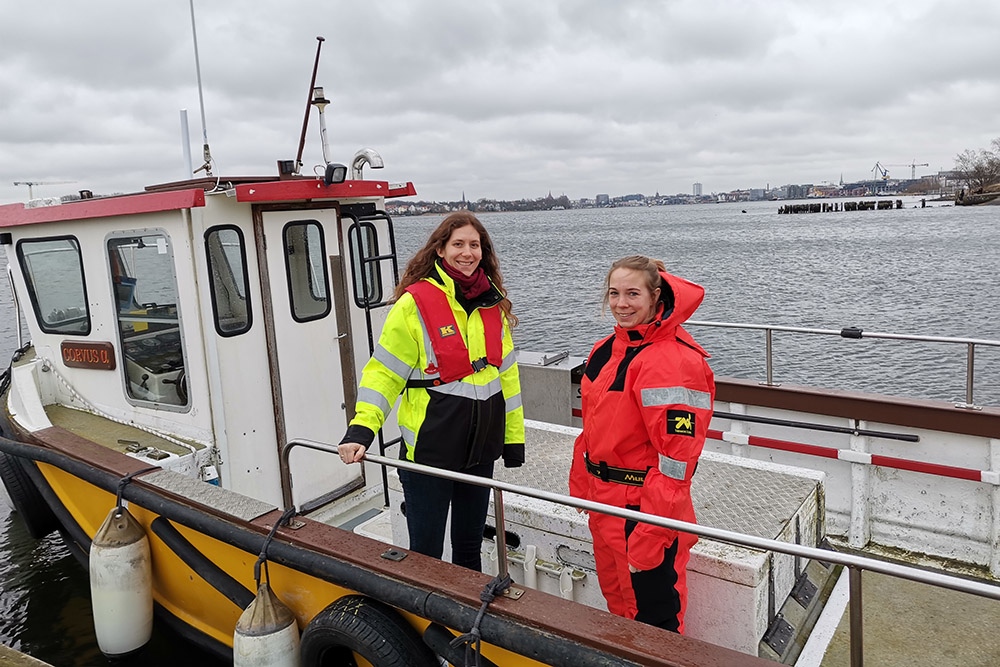
More and more countries ban previously used copper coatings
While there are already coatings available to combat so-called "fouling”, these are usually based on copper. More and more EU countries are now banning these protective coatings because the reddish heavy metal pollutes the environment and especially aquatic habitats. "We therefore want to develop a ceramic-based coating that keeps bacteria, algae and barnacles off maritime systems at least as well as today's protective coatings, but is environmentally friendly," says Jana Brinkmann, formulating one of the goals for the next three years.
And here one thing is essential: tests under real maritime conditions. Once the researchers have developed a new ceramic formulation in combination with a specific surface structuring, they test this new variant in the laboratory in Dresden on the one hand and in storage tests in Rostock on the other. They then investigate, for example, how a particularly roughened or microstructured new ceramic layer reacts to salt water or how well it withstands abrasion by sand and gravel ("abrasion") or frequent temperature changes. They also put compact ceramic components to the test. These can also be transparent and can be used, for example, as protective covers for optical sensors.

For the tough tests, it is off to sea
To find the optimum formulation, the scientists use a step-by-step approach: Under laboratory conditions in Dresden, they can create particularly controlled environmental conditions and analyze very precisely how the pH value or the salt affects a ceramic surface. In Rostock, in turn, they then test all this in increasingly complex practical scenarios: Johanna Sonnenberg and Jana Brinkmann, for example, can first place the samples on the SOT campus in special tubs that are flushed by the water of the Warnow River. However, it is also possible to deposit the samples in the river itself. And for the tough tests, there is the "DOL": One and a half kilometers from the coast of Nienhagen, a "Digital Ocean Lab" is anchored in the Baltic Sea. The scientists can travel there in a ship and hang their ceramics in the seawater for months of practical tests.
On the Rostock SOT campus, researchers have access to very special technical facilities because four institutes are on board here, all contributing their expertise and resources: In addition to IKTS, these include the Fraunhofer Institute for Computer Graphics Research IGD, the Fraunhofer Institute for Large Structures in Production Engineering IGP and the Fraunhofer Institute of Optronics, System Technologies and Image Exploitation IOSB. Several industry partners also participate in numerous research projects on campus.
Remotely operated underwater vehicle tests ceramic samples in the sea
"This also allows us to use a remote-controlled underwater vehicle, so we can regularly monitor the tests," Johanna Sonnenberg tells us. With this remote-controlled and camera-equipped Remotely Operated Underwater Vehicle (ROV), the scientist can, for example, visually inspect on a regular basis whether her sample carriers are already overgrown with the latest coating – or whether a storm has scattered the experiment underwater. This is because the coated sample carriers often spend a lot of time at sea – six months is not uncommon. And a lot can happen under the water surface in six months.
For the analysis itself, the team combines several methods: light microscopy is used for the examination of the surface structure. Zeta potential determination can be used to determine the surface charge, and scanning electron microscopy can be used to determine the topography and morphology of the layers. The contact angle measurement in turn quantifies the surface energy. The researchers plan to present their first results in three years: A demonstrator will then be coated with particularly promising antifouling ceramics to demonstrate the potential of the copper paint alternative to potential users.
New environmentally compatible ceramic coatings also to reduce maintenance costs
It is foreseeable that this will initially be more expensive than a classic coating: "Coating and structuring ship hulls or offshore structures with ceramics is of course more expensive than a plastic coating," explains Dr. Annegret Potthoff, who heads the Powder and Suspension Characterization Group at IKTS. But there are also good arguments for a changeover – both economically and ecologically. "The ceramic coatings are more durable than a plastic coating," emphasizes Dr. Potthoff. Especially for operators of wind energy platforms and other offshore structures, where structures must even be completely rebuilt after the end of the guaranteed lifetimes, a consistent ceramic protection could quickly pay off.
In addition, the new IKTS solutions will probably also ensure savings in ongoing ship operations: When hulls no longer cover so quickly, their flow resistance during the cruise also no longer increases as much as before. In other words, ceramic-coated container giants or hydrogen tankers could potentially reduce their fuel consumption noticeably and thus their operating costs. Finally, the stricter environmental protection requirements are likely to make shipowners and platform operators rethink, believes Annegret Potthoff: "The protection of the oceans is playing an increasingly important role worldwide, as the UN Decade of Oceans shows," she argues. "As a consequence, legislators in more and more countries will demand ecologically sound antifouling solutions. This should then also increase acceptance for a certain amount of extra effort."
